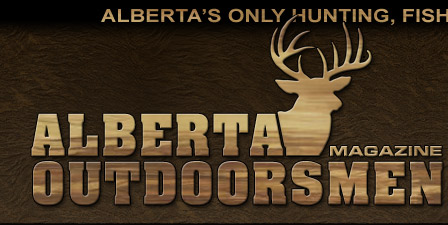|
 |
 |
With backpack and 22-250 slung over my shoulder, I slowly worked my way up the snow-packed trail towards a large opening that bordered a frozen, meandering creek—a preferred hunting route of coyotes.
Hunting Crown land within a respectable distance of farmland and a cattle operation, my intention was to setup on a slope overlooking the opening and perhaps call a coyote to my location with my newly acquired electronic call.
For the past few days I had drove my wife Rhonda, not to mention my dogs, crazy with electronic experimentations in the basement of our home.
Feeling comfortable with the new unit, I was now ready to give it a chance to prove itself worthy of its exorbitant price.
Predator hunting and control is often one of those controversial issues that when placed within a public spotlight is seldom accepted as necessary. In fact, few outside the hunting community condone the practice, especially when it results in the promotion of ungulate populations for hunting purposes.
However, emotions aside, predator control is much needed in a province where wolf and coyote populations have seized the day. Realizing this, Sustainable Resource Development (SRD) legalized the use of electronic calls in 2009 with the hope that it would further the success of predator hunters and curtail a burgeoning population of predators. And since then, predator hunting has gained a renewed interest in Alberta as more hunters begin to take up the pursuit after their big calibre rifles have been stored for the winter. Now, smaller calibre rifles are consistently slung over shoulders for coyotes, fox and wolves in January and February when the weather turns from cold to worse, and pelts are at a premium.
But, unintentionally, SRD limited the use of electronic calls by limiting the types of sounds that can be emanated from them when hunting.
In fact, because of the wording within our regulations, confusion among predator hunters often arises as to what sounds can be used and what sounds can’t be used.
 |
| Since the legalization of electronic calls, the ranks of the predator hunter has grown exponentially. |
According to the Alberta Guide to Hunting Regulations, “...electronic calls can be used to hunt crows, magpies, coyote, red fox and wolf (using sounds that mimic these animals or rodents).” The key words here are “using sounds that mimic these animals or rodents.” Suddenly an entire host of sounds used with electronic calls is off limits, including every predator hunter’s favourite call, the dying rabbit, or rabbit in distress call.
It should be noted here that rabbits are members of the family Leporidae in the order of Lagomorpha, whereas rodents are members of the order Rodentia. The Lagomorpha classification was given to rabbits in the early 1900’s. Therefore, that dying rabbit or rabbit in distress button on your electronic call, by wording, is illegal to use in Alberta when hunting predators.
However, in conversation with Provincial Big Game Specialist, Rob Corrigan, the spirit of the regulation was not to dissuade predator hunters from using electronic dying rabbit or rabbit in distress calls, after all, the intent here is to reduce coyote and wolf populations. Removing one of the more popular calls from the predator hunter’s arsenal would hinder that process.
Fish and Wildlife is looking at the current regulation and a possible rewording may take place in the near future. However, you can consider electronic rabbit sounds legal for use in the province.
With my electronic caller, a Foxpro FX3, I have found that the “Coyote Locater” call works well in determining if I do in fact have coyotes in the area, which in the vast majority of cases I get return calls almost instantly. I may use the coyote locater call again right away to create what I like to call a coyote frenzy, but then that’s it. At this point, the game is now in your hands and experimenting with different sounds will help you decide what works best for you in the area you hunt.
I’ve also had success using the “Female Coyote Invitation” call, but sometimes a big dog will “hang up”. Good friend Ken Colwill and I had a male “hang up” on us last January in the bush on the edge of a field full of cattle. The male refused to enter the scene and chose instead to bark at us from a mere 10-yards. Unable to see him and unsure of what to do next, I hit the invitation call once more and never heard from him again. I must admit, however, that during our standoff, which lasted for several minutes, the adrenaline was flowing, as it was extremely exciting to have a ‘yote that close.
I have also had good success with various rabbit calls. However, in turn, I’ve had little success using “Vole Squeaks” or similar rodent sounds. If there was a reason to hunt great horned owls though, vole squeaks work well. In fact, twice now I’ve had a great horned owl sitting on top of my caller, and quite humourously, wondering why that big meal that was so easily acquired is suddenly not so edible and won’t shut up.
Regardless of how you choose to predator hunt, predator hunt you should. Coyotes create havoc on annual spring fawn production as do wolves with all our ungulates.
Al Voth, a far more experienced predator hunter than I, offers several good suggestions for using electronic callers on page 12. Make sure you give “The Digital Hunter” a read, then get out there, and help put that predator population in check. Our ungulates will thank you for it. ■
For previous Outdoor Pursuits click here.
|
|
|
|


